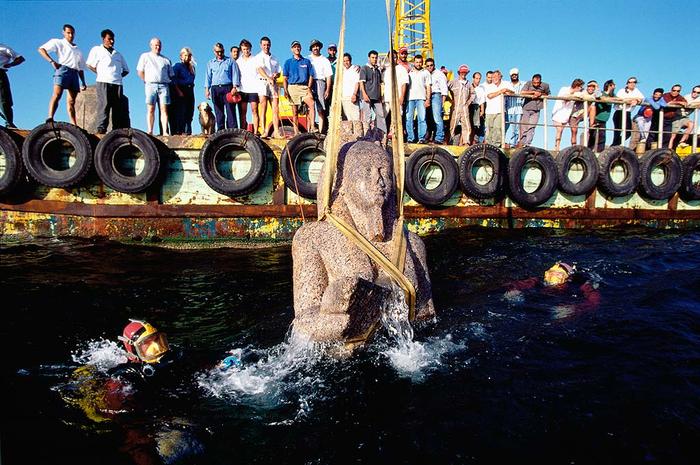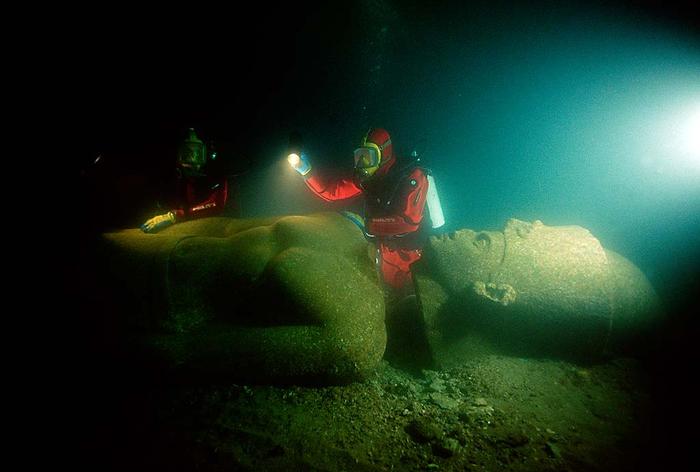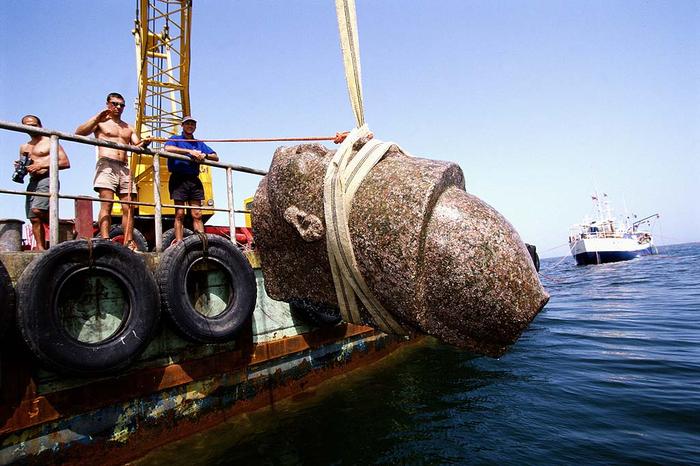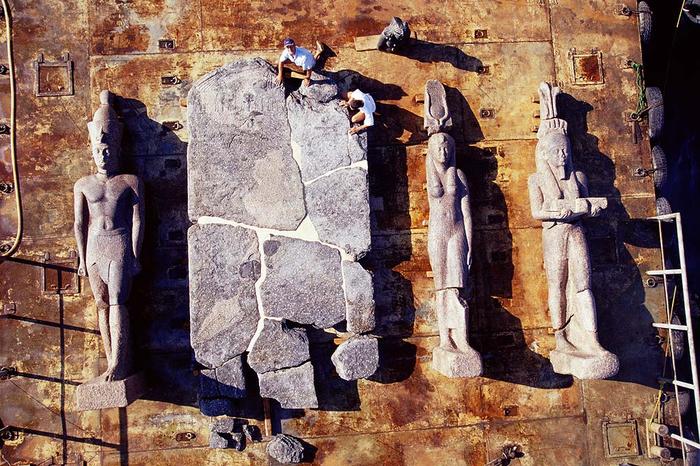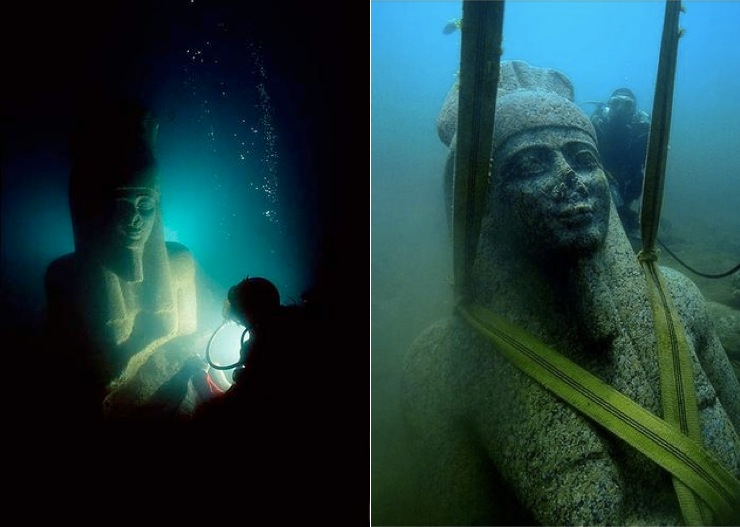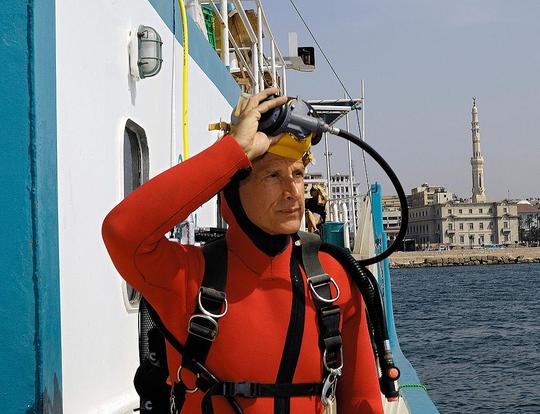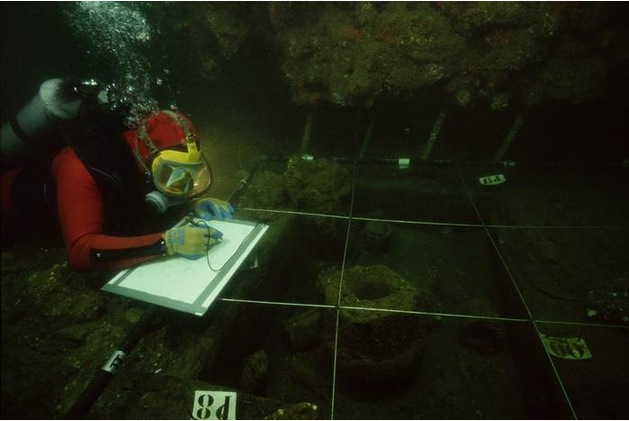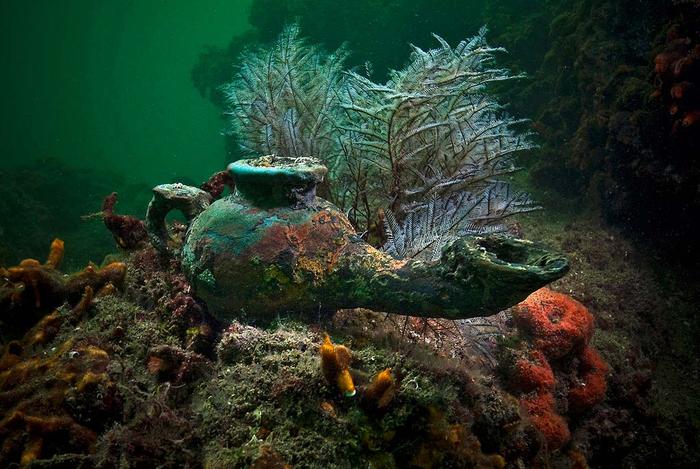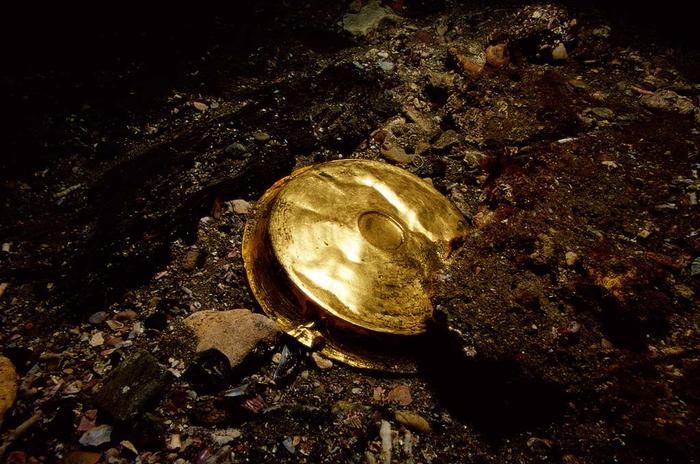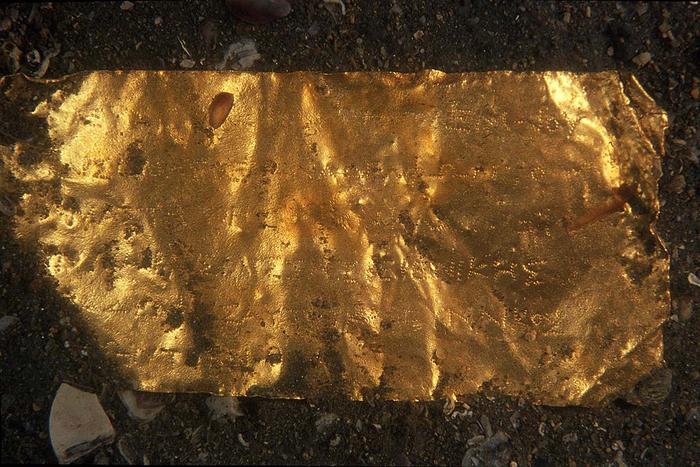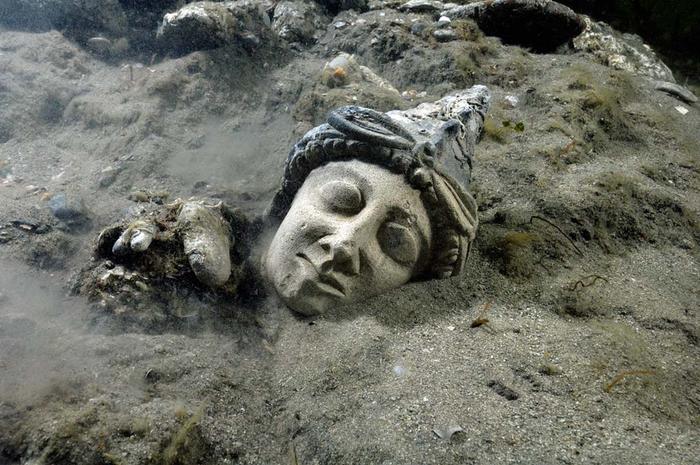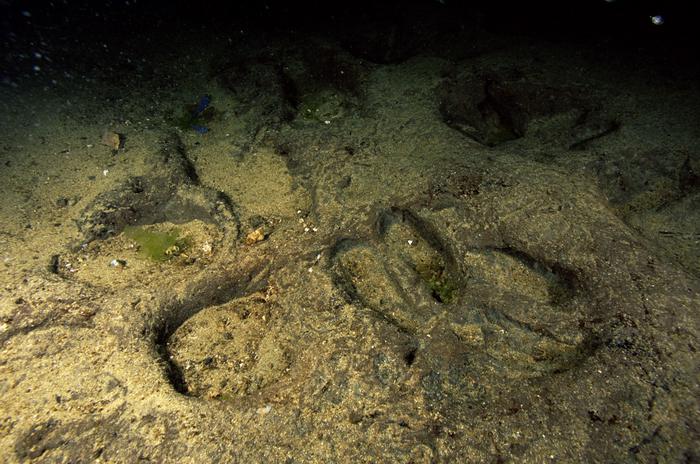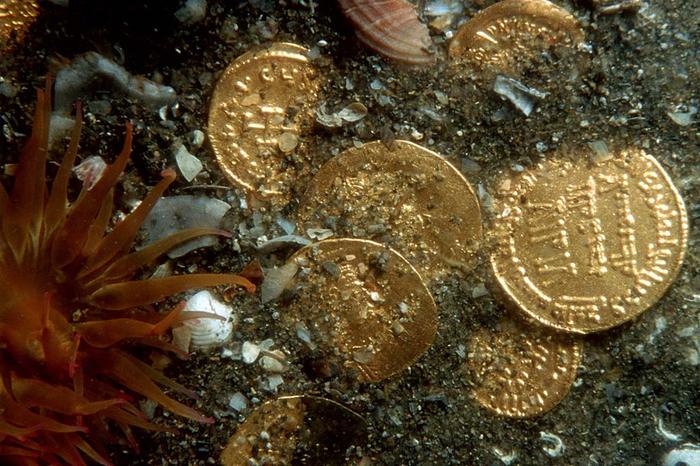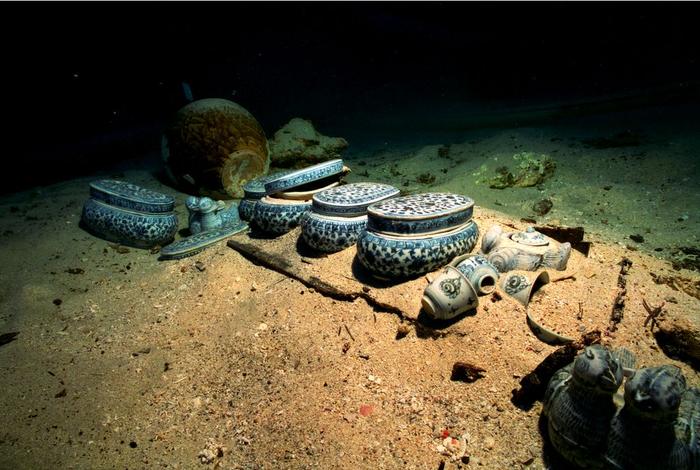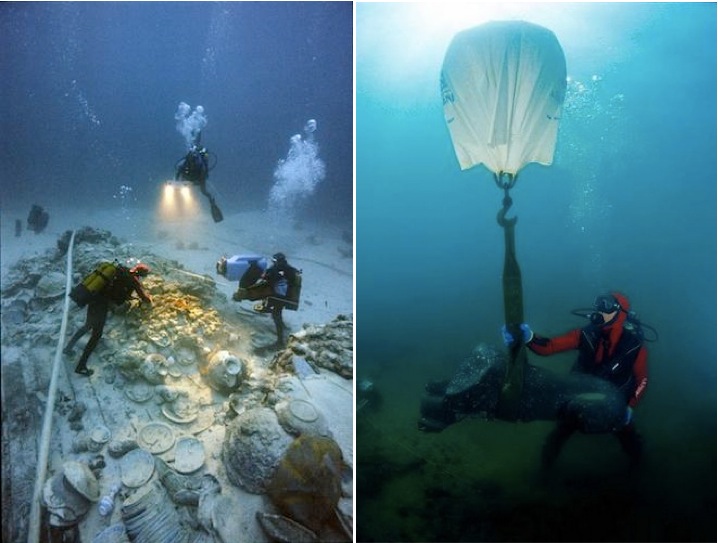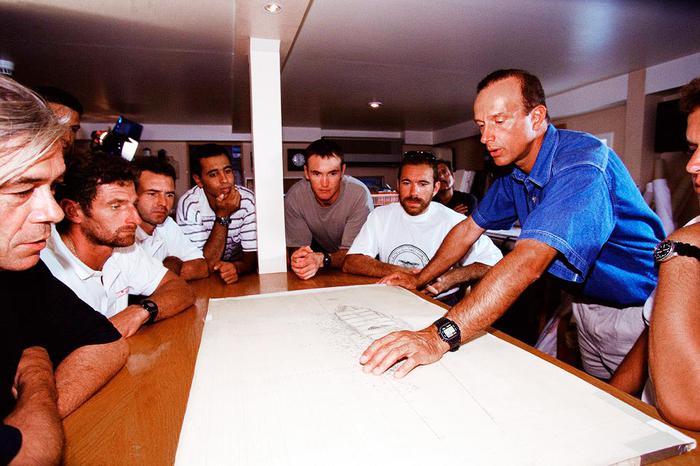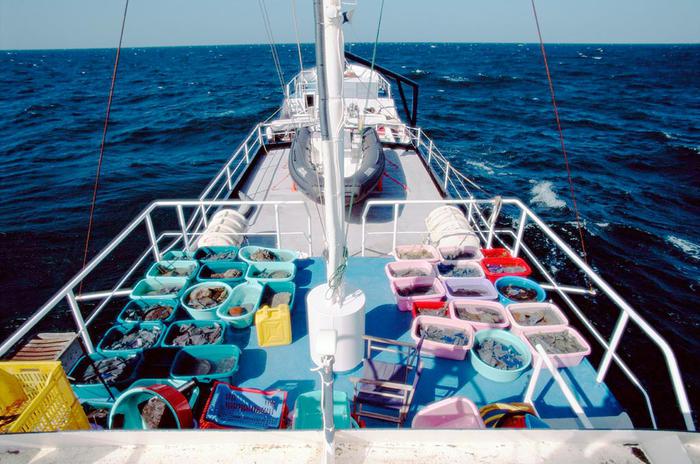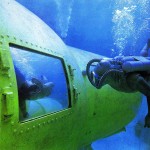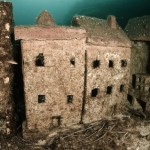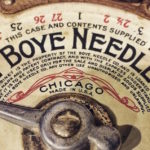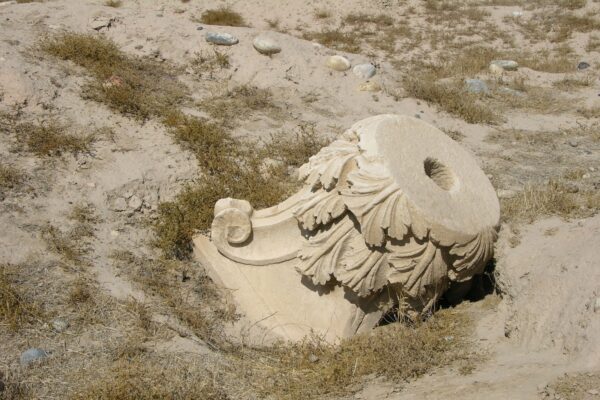For the last thirteen years, he’s been busy digging up a lost underwater civilization the size of Paris off the coast of Egypt. The remarkably well-preserved ruins that were discovered have been sitting at the bottom of the Mediterranean sea for the past 1,200 years, at long last solving the mystery of the lost city of Alexandria’s ancient eastern harbour, Portus Magnus. Not bad for a day job.
All photos ©Franck Goddio/Hilti Foundation, photographed by Christoph Gerigk
Frenchman Franck Goddio is our man, a pioneer of modern maritime archeology who has wanderlust running in his veins. He’s the grandson of the inventor of the modern catamaran, Eric de Bishop, and a specialist of ancient navigational routes in the South Pacific. Yet, before pulling up Pharoah’s heads from the seabed, Franck was a finance guy — an advisor to governments and United Nations. It wasn’t until the 1980s that he left the world of finance behind and decided to find his sea legs (and a few other things)…
He founded the Institut Européen d’Archéologie Sous-Marine (IEASM) and put together a team of divers, archaeologists, scientists, and other experts. To date, his ongoing thirteen-year excavation off the coast of Egypt has been Goddio’s most ambitious. In 2000, after nearly eight years of prior research (dedicated to determining the location of the submerged civilisations), Goddio and his team rediscovered the ancient port cities of Thonis-Heracleion and Canopus in Aboukir bay.
More than a thousand years ago, they had fallen prey to natural disasters and disappeared beneath the waves. Colossal statues, giant tablets inscribed in ancient Greek and ancient Egyptian, gold and bronze artifacts forgotten on the seabed — they were all unearthed from layers of sediment by Goddio and his team.
Everything that’s been found dates from the 8th century AD (or earlier), and experts have been astounded by how well preserved the artifacts are. Canopus was a city famous for its extravagant shrines and the opulent lifestyles of its citizens. Heracleion, just 3km east of Canopus, was home to an enormous ancient temple and convent. This colossal red granite statue of red granite above, discovered on the site by Goddio’s team, represents (rather ironically) Hapi, the god of the flooding of the Nile. Never before has such a large-scale representation of the divine figure been discovered.
To raise heavy artefacts, Goddio’s team will often use airbags capable of resisting a pressure of 100 atmospheres. But the work lies mostly in finding the treasure first, a process that can occupy underwater archeologists for decades, and requires meticulous study of ancients texts and archives in order to determine a probable location (that alone can take years). Then, the cutting edge technology comes in. We’re talking specially developed nuclear magnetic resonance magnetometers, multi-beam bathymetries, sidescan sonars, and other hi-tech stuff I can’t pronounce. Once they think they’ve found something, test excavations are performed, and if the data gives some positive signals, the full archaeological excavation can finally begin (in full accordance with UNESCO, of course).
Water dredges (underwater suction devices) are used by the divers to remove thousand-year-old sediment. As per the Convention for the Protection of Underwater Cultural Heritage, artifacts are “usually” left on site but if they’re deemed at risk, they may be risen for their “safeguard, study and conservation.” At the Alexandria National Museum (a renovated 1929 Italian style mansion in Alexandria, Egypt), one can find Franck Goddio’s most important findings on permanent display for the public.
See here for more museums housing Franck Goddio finds.
Franck Goddio with the intact and inscribed Heracleion stele (1.90 m); It was commissioned by Nectanebo I (378-362 BC) and is almost identical to the Naukratis Stele in the Egyptian Museum in Cairo. The place it where was intended to be situated is clearly marked: Thonis-Heracleion.
A gold vessel (Phiale) recovered from Thonis-Heracleion. Phiale were shallow dishes used throughout the Hellenistic world for drinking and pouring libations.
This gold object (11 x 5 cm) was found during the preliminary exploration of the southern sector of Heracleion. It is engraved with a Greek text of five and a half lines. It is an example of a plaque that act as a signature for foundation deposits in the name of the king, Ptolemy III (246–222 BC), responsible for building.
A limestone head of a statue found at Canopus. It probably originates from Cyprus (contacts between Cyprus and Egypt are well attested during the middle of the 1st millennium BC).
Animal footprints preserved at Canopus after the removal of 2.5 m of sand.
Golden coins dating from Byzantine (7th century AD) and Islamic (8th Century AD) periods, found at Canopus.
Franck also dabbles in excavating odd shipwrecks from ancient trade routes now and then, such as this “junk,” as he calls it, which sank around 1490 off the coast of the Philippines. Inside, he found a time capsule of blue and white porcelain bowls stacked together from the cargo of the sunken “Lena” at 48 metres deep.
Archaeological divers carefully excavating (left), and lifting a heavy artifact by airbag (right).
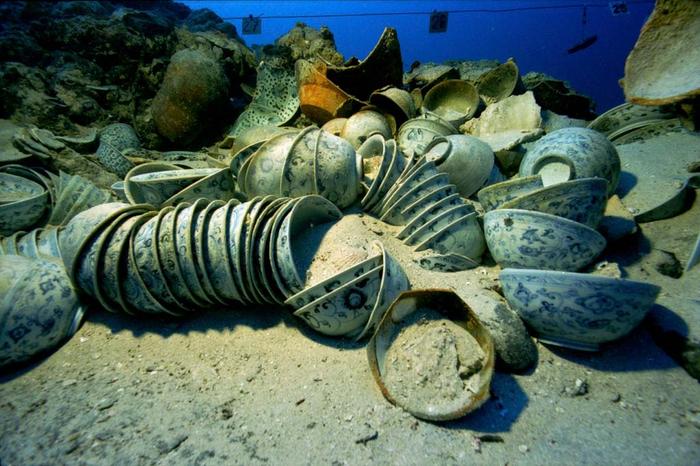
Pictured below are Goddio’s findings from Napoleon Bonaparte’s fleet, which was lost in the Battle of the Nile in 1798.
So, how’s your week at the office looking so far?!
Visit the water world of Franck Goddio
All photos ©Franck Goddio/Hilti Foundation, photographed by Christoph Gerigk


